Crafting a Winning Leadership Development Program Cover Letter
A compelling leadership development program cover letter is your first opportunity to make a lasting impression and secure a spot in a coveted program. It’s more than just a formality; it’s a crucial tool that allows you to showcase your leadership potential, align your aspirations with the program’s objectives, and persuade the selection committee why you’re the perfect fit. A well-crafted cover letter does more than just reiterate your resume; it provides a platform to tell your story, highlighting the experiences, skills, and passion that make you a standout candidate. This guide will provide you with the necessary insights and strategies to craft a cover letter that wins.
Understanding the Importance of a Cover Letter
In the competitive landscape of leadership development programs, a cover letter can be the differentiating factor that sets you apart from other qualified applicants. It serves as a bridge between your resume, which provides a summary of your qualifications, and the selection committee’s understanding of your potential. It allows you to express your personality, enthusiasm, and unique value proposition, providing a deeper insight into why you’re interested in the program and what you hope to achieve.
Why a Cover Letter Matters for Your Application
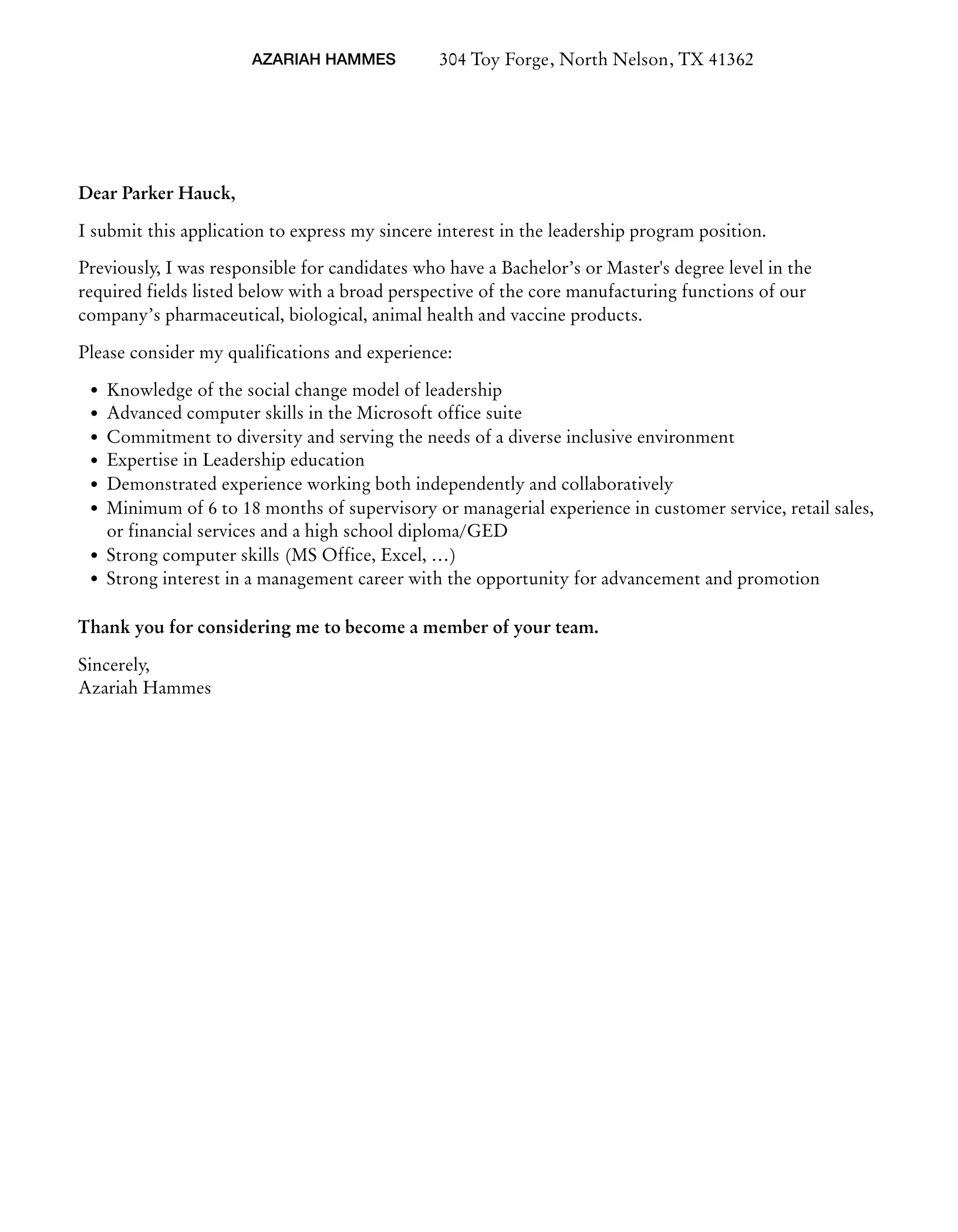
The cover letter is your opportunity to tell a story, explain your motivations, and convince the selection committee that you are the right fit for their leadership program. Without it, you’re merely a list of accomplishments; with it, you are a person with aspirations, skills, and a clear understanding of how the program can help you achieve your goals. It demonstrates your communication skills, attention to detail, and genuine interest in the program. It’s your chance to connect with the reviewers on a more personal level and make them remember you.
Essential Components of a Leadership Development Cover Letter
A successful leadership development cover letter should contain key elements that demonstrate your suitability for the program. These components work together to create a cohesive narrative that effectively presents your qualifications, aspirations, and fit for the program. Structuring your cover letter with these components ensures you communicate all of the relevant information while keeping the letter organized and easy to read.
Header and Contact Information
Start your cover letter with a professional header that includes your name, address, phone number, and email address. This should be followed by the date, the name of the recipient (if known), their title, and the organization’s address. Using a professional header shows attention to detail and is an important initial element in the cover letter’s structure. Ensure that all of the information is accurate and that your email address and phone number are current and professional.
Personalized Salutation
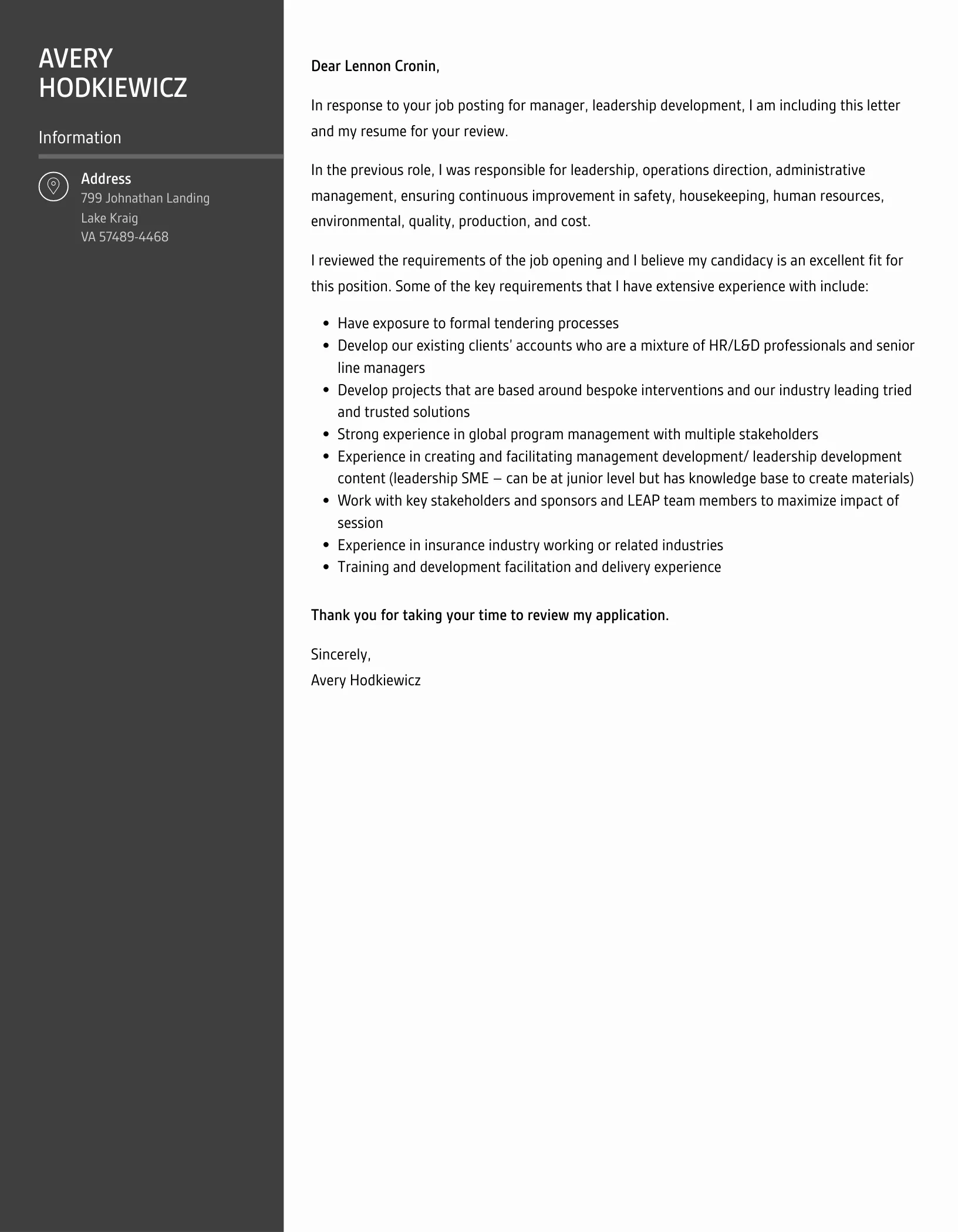
Address the recipient by name whenever possible. If you do not know the name of the person, research the program’s website or contact the organization to find out. A personalized salutation demonstrates your attention to detail and interest in the program. Avoid generic greetings like ‘To Whom It May Concern’. If you are unable to find a specific name, use a professional title like ‘Dear Program Director’ or ‘Dear Hiring Committee’.
Opening Paragraph Grab Attention
The opening paragraph sets the tone for the rest of your cover letter. It should immediately grab the reader’s attention and highlight your interest in the leadership development program. Start by stating the position you are applying for and where you found the opportunity. Briefly mention why you are interested in the program and what initially drew you to it. For example, you might mention the program’s reputation, its impact on previous participants, or its alignment with your career goals.
Highlighting Your Leadership Skills
This is a crucial section where you explicitly showcase your leadership abilities. Highlight the specific leadership skills you possess, such as communication, decision-making, problem-solving, team management, and strategic thinking. Provide concise examples from your previous experiences where you demonstrated these skills. Use action verbs to describe your accomplishments and responsibilities. Demonstrate how your leadership skills align with the requirements and objectives of the program.
Showcasing Relevant Experiences
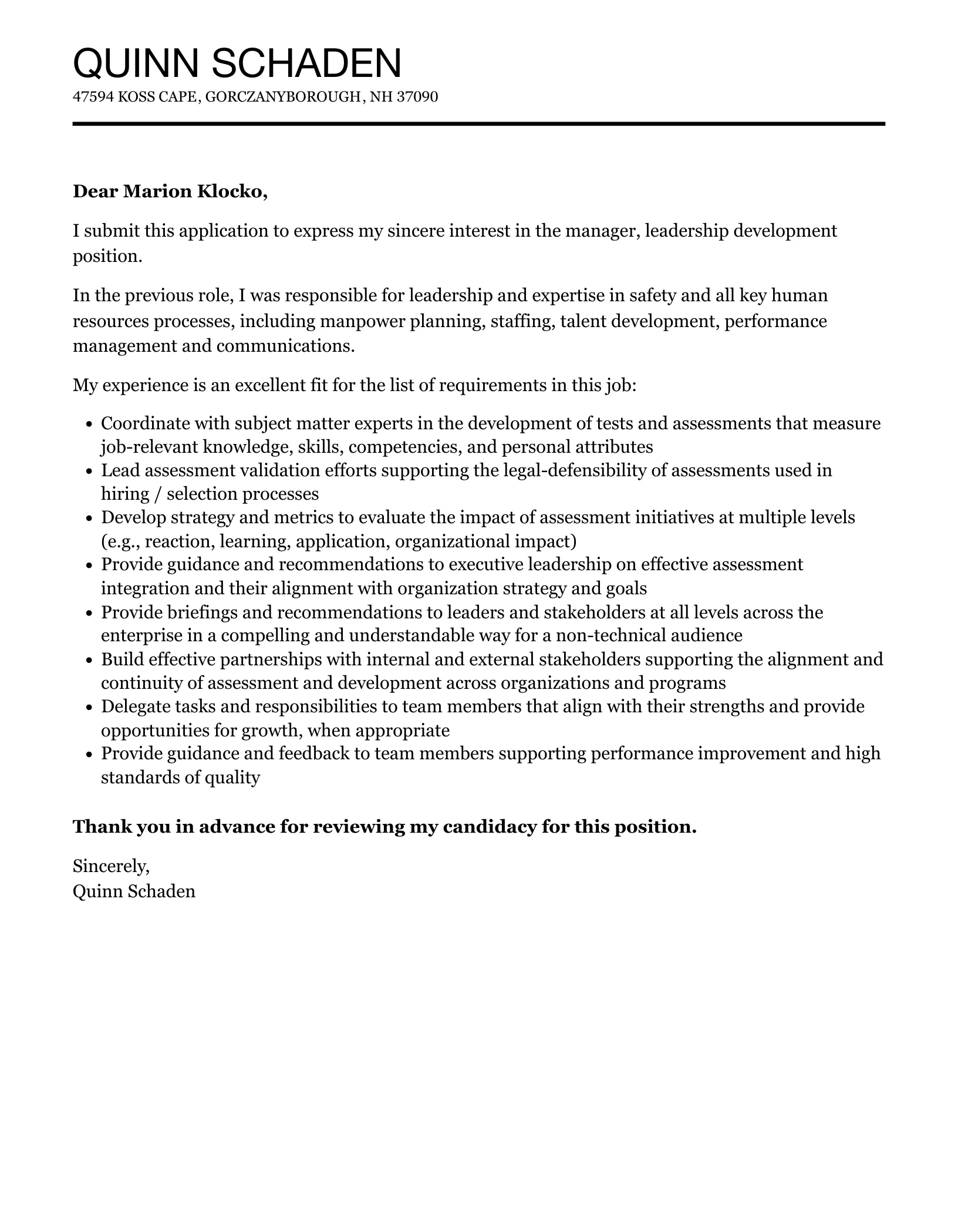
Describe your relevant experiences, including work experience, volunteer activities, and academic achievements. Focus on experiences that demonstrate your leadership potential and align with the program’s focus. Use the STAR method (Situation, Task, Action, Result) to structure your descriptions, providing context and explaining your contributions. Always emphasize what you learned from these experiences and how they have prepared you for the program.
Quantifying Achievements
Instead of just listing your responsibilities, quantify your accomplishments whenever possible. Use numbers, percentages, and statistics to show the impact of your actions. For example, if you led a team that improved project efficiency, state by what percentage you improved the efficiency. This will provide concrete evidence of your abilities and make your achievements more impactful.
Expressing Your Passion and Fit
Convey your genuine passion for leadership and your enthusiasm for the specific leadership development program. Explain why you are drawn to this particular program and what you hope to achieve by participating. Discuss how the program aligns with your career goals and personal values. This demonstrates to the selection committee that you are highly motivated and committed to your development.
Demonstrating Program Alignment
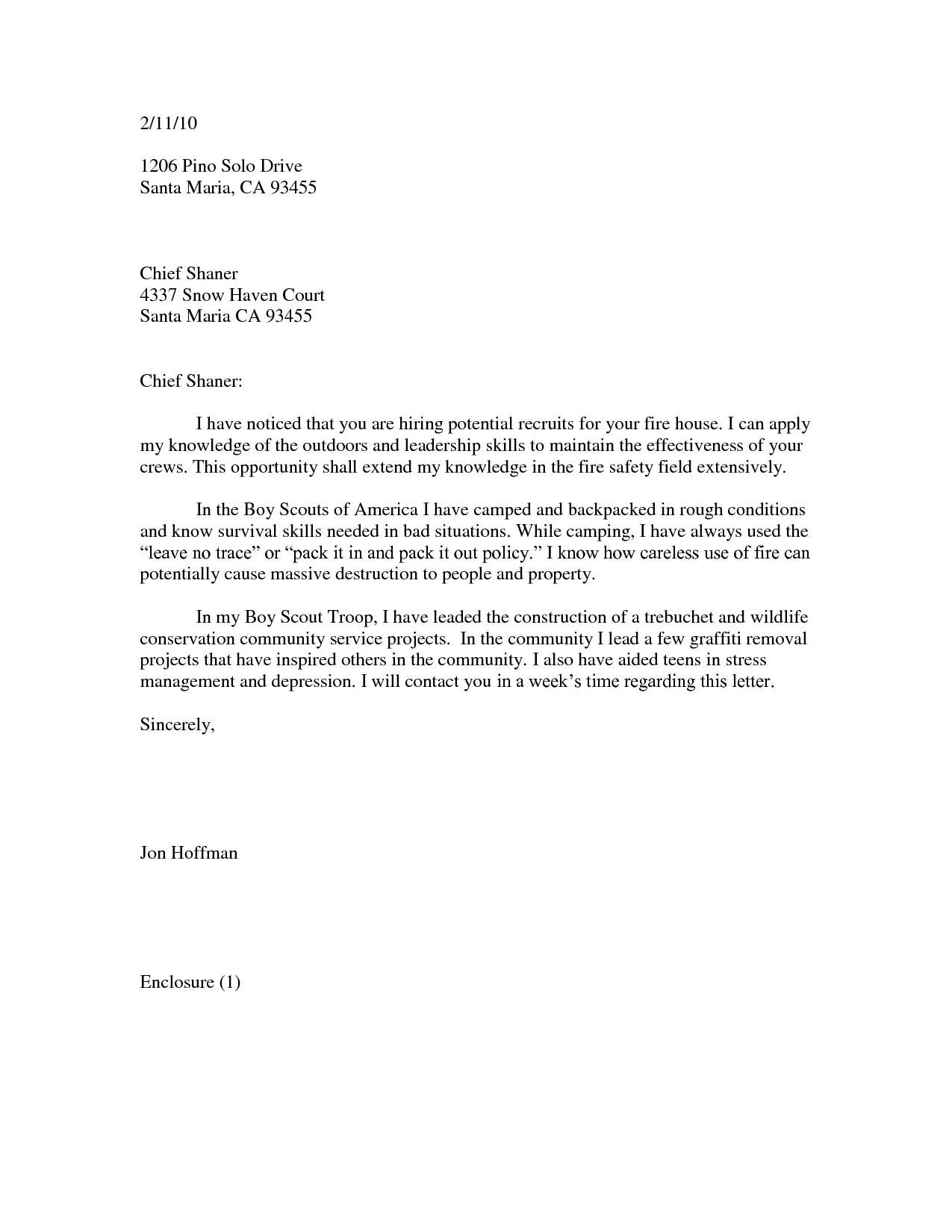
Carefully research the leadership development program and highlight how your skills, experiences, and goals align with the program’s mission and values. Explain why this specific program is the ideal choice for your leadership development. Focus on the specific aspects of the program that resonate with you. Show that you’ve done your homework and are serious about attending this specific program.
Addressing the Program’s Objectives
Address how your participation in the program will help you achieve its objectives. Briefly discuss how you plan to contribute to the program and what you hope to gain from it. If the program focuses on particular leadership skills or areas, specifically explain how you will leverage these aspects to enhance your leadership capabilities and positively impact your future endeavors.
Closing Paragraph Call to Action
Your closing paragraph should leave a positive impression. Reiterate your interest in the program and briefly summarize your key qualifications. Express your enthusiasm for the opportunity to contribute to the program. Include a clear call to action, such as expressing your availability for an interview or stating your anticipation of hearing from them soon.
Expressing Gratitude and Following Up
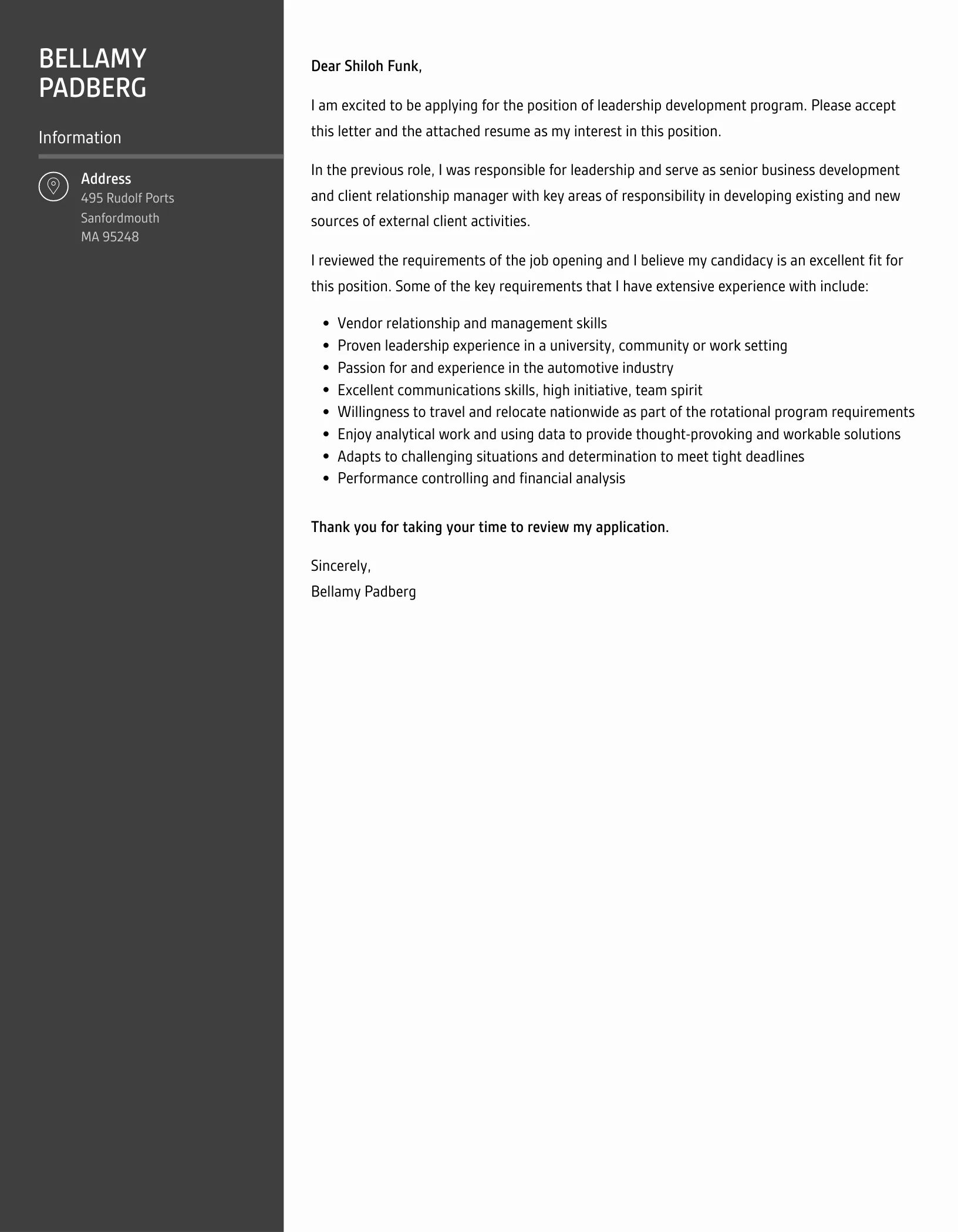
Thank the reader for their time and consideration. State your appreciation for their attention to your application. If possible, mention that you are available for an interview and provide your contact information. Be sure to follow up on your application within the timeframe specified by the program. This is a professional courtesy and shows your continued interest.
Formatting and Presentation Tips
The format and presentation of your cover letter play a significant role in making a positive first impression. A well-formatted letter that is easy to read and visually appealing shows attention to detail. Use a professional font like Arial or Times New Roman with a font size between 11 and 12 points. Ensure your letter is properly aligned and uses consistent spacing. Keep your letter concise and to the point, ideally within one page. Proofread your letter thoroughly to eliminate any grammatical errors and typos.
Proofreading and Editing
Proofreading is essential to ensure your cover letter is free of errors. Errors can undermine your credibility and make you appear careless. Carefully read your cover letter for any typos, grammatical errors, or inconsistencies. Consider having a trusted friend or colleague review your letter as a second set of eyes can often catch errors that you might miss. Ensure that the tone is professional and that the content is clear and easy to understand.
Tailoring Your Letter
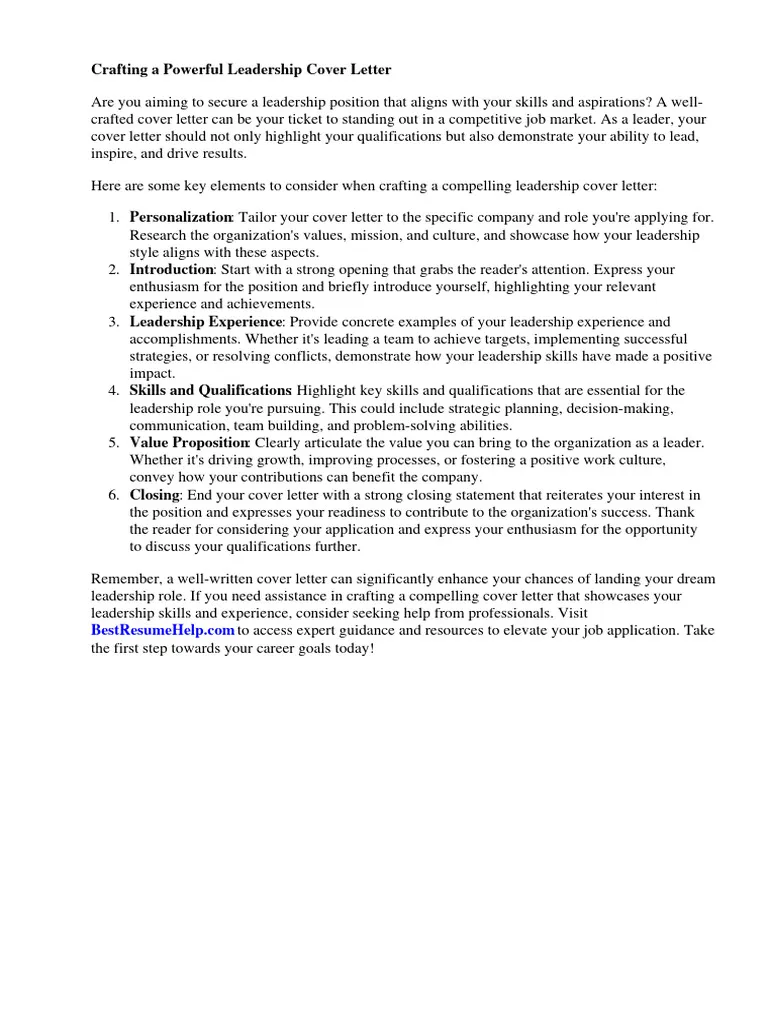
Avoid using a generic cover letter for every program. Tailor your letter to each specific leadership development program you’re applying for. Research the program’s mission, values, and requirements and tailor your letter to align with these aspects. Demonstrate that you understand what the program is looking for and that you are a good fit. Customization is key to making your application stand out. Highlight specific skills, experiences, and achievements that are most relevant to each program.
Avoiding Common Mistakes
Be aware of the common mistakes that applicants make when writing a cover letter. Avoiding these mistakes can significantly improve your chances of success. By paying attention to the details, you can create a letter that is professional, compelling, and free of errors. A well-crafted cover letter reflects favorably on you and shows your dedication to the program.
Using Generic Phrases
Avoid using generic phrases or clichés that lack substance and fail to demonstrate your unique value. Generic statements will not impress the selection committee. Instead, use specific and tailored language that reflects your experience, skills, and understanding of the program. Personalize your language to showcase your enthusiasm and demonstrate your deep interest in the program.
Ignoring Program Requirements
Always carefully read and adhere to the application guidelines. Ensure your cover letter meets all the specific requirements of the program. Ignoring these requirements can lead to your application being rejected. Carefully check the length, formatting, and any other instructions provided by the program. If the program asks specific questions, make sure to answer them thoroughly and thoughtfully.
Overlooking Tone and Voice
Make sure your cover letter has a professional and enthusiastic tone. The tone should reflect your personality and genuine interest in the program. Avoid sounding too casual or informal. Ensure your letter maintains a consistent tone throughout and effectively communicates your skills, experience, and alignment with the program’s objectives. A professional and engaging tone can make your cover letter stand out and leave a lasting positive impression.
